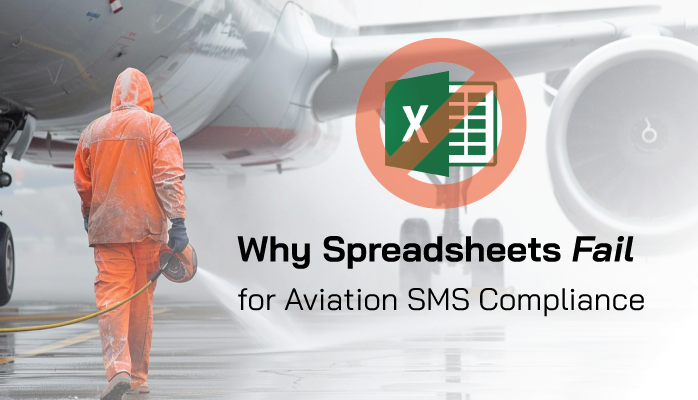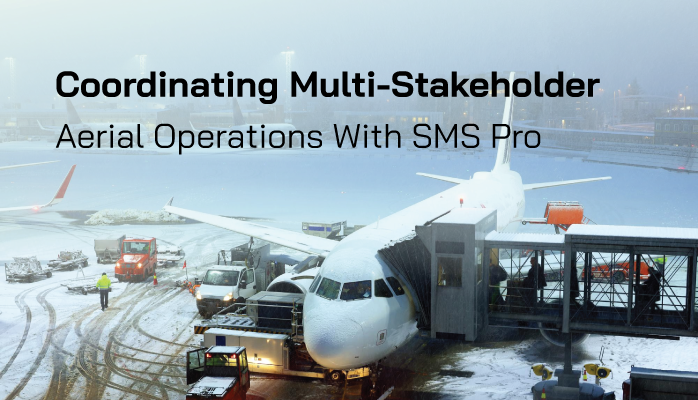Jamie Adams

Jamie Adams, born in Homer, Alaska, developed a deep interest in aviation mechanics growing up in a town surrounded by small airfields and seaplanes. After completing their Airframe and Powerplant (A&P) certification, Jamie began a career in aviation maintenance, working for 25 years in a Maintenance, Repair, and Overhaul (MRO) facility in Anchorage. There, Jamie specialized in aircraft systems, focusing on turbine engines and avionics for regional aircraft operating in Alaska’s demanding conditions. Jamie’s meticulous attention to detail and expertise in troubleshooting complex mechanical issues earned them a reputation as a trusted technician among pilots and operators. In 2012, Jamie joined SMS Pro, a leading provider of Safety Management System (SMS) software for the aviation industry. Transitioning from hands-on maintenance to a safety-focused role, Jamie brought their extensive MRO experience to the table, helping aviation organizations implement effective safety protocols. As a safety specialist at SMS Pro, Jamie develops risk assessment tools and training programs, ensuring maintenance teams adhere to global safety standards. Their practical insights have been vital in bridging the gap between operational maintenance and safety management. Jamie continues to reside in Homer, where they enjoy fishing and mentoring young aviation enthusiasts. They hold a degree in Aviation Maintenance Technology from the University of Alaska Anchorage and remain an active member of the Alaskan aviation community.
Creating Aviation SMS Communication Plans
An effective communication plan is a vital component of an aviation Safety Management System (SMS) manual, as outlined in TOC 1.5. It ensures that safety information, including hazard reports and safety policies,
Read More
Topics:
Aviation SMS Implementation,
4-Safety Promotion,
1-Safety Policy
For new aviation safety managers, preparing for a Safety Management System (SMS) audit is a daunting task. One of the most challenging aspects is coaching accountable executives—senior leaders like CEOs, directors, or operations managers—to play their part in demonstrating SMS compliance.
These executives often lack the time or technical expertise to fully grasp SMS concepts, yet regulators from the FAA, EASA, or ICAO expect them to articulate their role in overseeing safety.
Read More
Topics:
Aviation SMS Implementation,
3-Safety Assurance,
Risk Management Training,
FAA Compliance,
Safety Culture
Defining SMS Roles in Aviation SMS Manuals
Defining roles and responsibilities in an aviation Safety Management System (SMS) manual is critical for ensuring accountability and compliance with International Civil Aviation Organization (ICAO), Federal Aviation Administration (FAA), and European Union Aviation Safety Agency (EASA) standards.
Outlined in TOC 1.4 of the SMS manual, clear role assignments empower safety managers, accountable executives, and frontline staff to execute safety processes effectively. Whether for small flight schools or global airlines, this step reduces compliance risks by 80%, as demonstrated by client outcomes.
Read More
Topics:
Aviation SMS Implementation,
1-Safety Policy
For new aviation safety managers, creating safety management system (SMS) documentation is a critical yet challenging task, particularly when it comes to record-keeping procedures. In aviation safety risk management, well-documented record-keeping ensures traceability, supports regulatory compliance, and facilitates audits by the Federal Aviation Administration (FAA).
Without clear procedures for who maintains records and how they are accessed, organizations risk non-compliance, disorganized audits, and compromised safety.
This evergreen guide provides a step-by-step approach to documenting record-keeping procedures, helping aviation safety managers build a robust, regulatory-compliant SMS.
Read More
Topics:
Aviation SMS Implementation,
3-Safety Assurance,
FAA Compliance
Aviation SMS Software Buyer’s Guide
Selecting the right Safety Management System (SMS) software is critical for aviation organizations aiming to meet regulatory requirements, enhance safety, and streamline operations. With the aviation industry’s increasing focus on proactive risk management, as mandated by the International Civil Aviation Organization (ICAO) and the Federal Aviation Administration (FAA), choosing the best SMS software can make or break your safety program. This comprehensive SMS Pro buyer’s guide outlines key criteria, compares top solutions, and explains why SMS Pro stands out as the ideal choice for airlines, airports, MROs, UAS and flight schools.
Read More
Topics:
Aviation SMS Database,
Risk Management Software,
Risk Management Training,
Quality-Safety Management
Spreadsheets for Aviation SMS Compliance
For aviation safety managers and accountable executives, implementing an effective Safety Management System (SMS) is critical to meeting ICAO Annex 19, FAA Part 139, and EASA regulations.
Read More
Topics:
3-Safety Assurance,
2-Safety Risk Management
Writing Safety Policy for SMS Manual
A safety policy statement is the cornerstone of an aviation Safety Management System (SMS) manual, setting the tone for an organization’s commitment to safety.
Read More
Topics:
Aviation SMS Implementation,
1-Safety Policy
Introduction: The Complexity of Multi-Stakeholder Aerial Operations
Aerial operations for utility tasks, such as power line inspections and wildfire patrols, involve multiple stakeholders—pilots, ground crews, maintenance teams, vendors and wildfire response units—working in high-risk, dynamic environments.
Read More
Topics:
Aviation SMS Database,
4-Safety Promotion,
Risk Management Software,
1-Safety Policy
Accountable Executives' Worst Nightmares
n high-risk industries like aviation, transportation, and energy, a robust Safety Management System (SMS) is critical for ensuring operational safety, regulatory compliance, and organizational resilience. However, accountable executives—those ultimately responsible for SMS oversight—face significant risks that can undermine its effectiveness.
Two of the most pressing challenges are the loss of the primary safety manager and the loss of safety data due to reliance on single devices (e.g., laptops with spreadsheets or Word documents) or corrupt hard drives. These risks, if unaddressed, can lead to safety incidents, regulatory penalties, and reputational damage.
Read More
Topics:
Aviation SMS Implementation,
Aviation SMS Database,
3-Safety Assurance,
Risk Management Training
Why Flight Schools Need Scalable Safety Solutions
Flight schools, often starting with small fleets and tight budgets, face unique challenges in maintaining a robust Aviation Safety Management System. Safety managers and SMS consultants advising small operators must balance compliance with regulations like those from the European Union Aviation Safety Agency while accommodating growth in enrollment or fleet size. A 2024 study showed that scalable SMS programs reduce compliance costs by 25% for small operators.
Read More
Topics:
Aviation SMS Database,
4-Safety Promotion,
Risk Management Software














